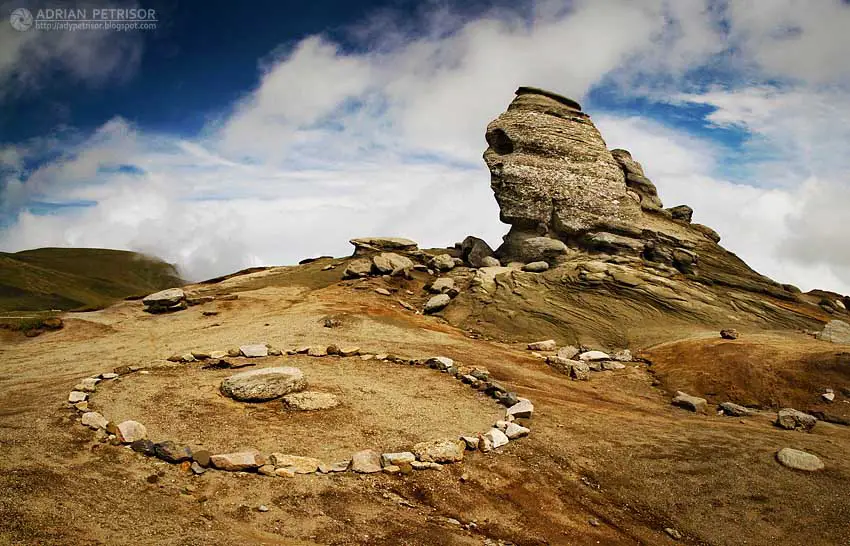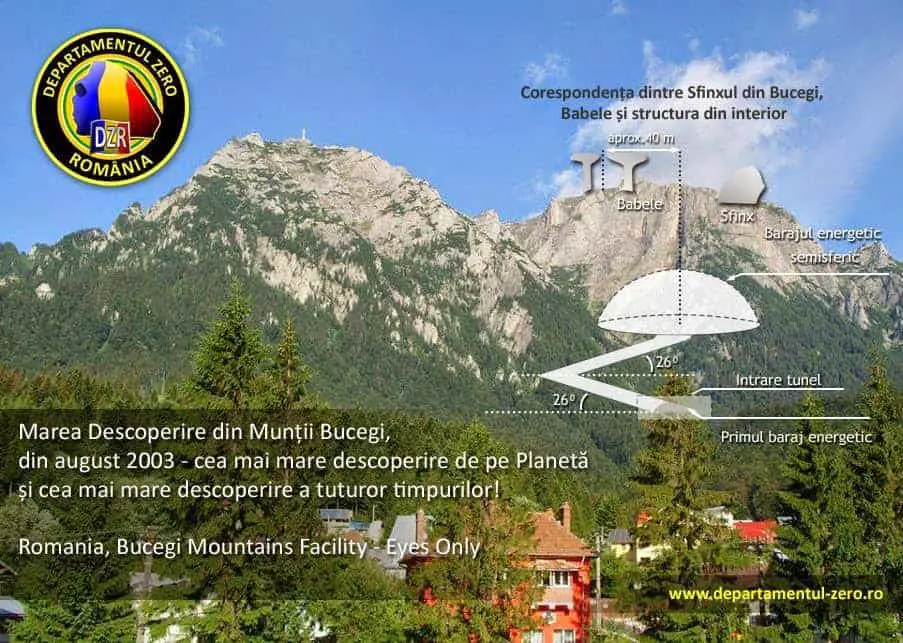
It is believed that in 2003, in a previously unexplored area of the Bucegi Mountains, a top secret Romanian Intelligence Service made a fascinating discovery that according to many authors and researchers, could change the history of mankind.
Supposedly, deep within the Earth, below the colossal Bucegi Mountains in Romania, traces of an extremely ancient civilization were found.
Years later, in 2009, a book titled Transylvanian Sunrise was published, creating a significant buzz in the paranormal researcher community. A good deal of Transylvanian Sun-rise deals with the repression of the discovery that has been made, and the effort to use its benefits only for specific purposes kept far away from society.
The book details a discovery made under the so-called Romanian Sphinx, at the Bucegi Mountains.
The Bucegi Mountains are part of the Carpathian Mountain Range that spans six European countries; however, the bulk of the Carpathians are located in Romania, precisely where the Bucegi Mountains are located.
Unbeknownst to most, there is an ancient sphinx located in the Bucegi Mountains of Romania. In 2003, the Pentagon discovered, through the use of satellite technology, an anomaly beneath this ancient sphinx.
The book –which according to many sounds like a science fiction novel— speaks of how a Pentagon satellite used for geodetic espionage discovered in 2002 a separate unit in a specific area of the Bucegi Mountains.
The empty space inside the mountain was not identified in correspondence with the outside; the empty space begun directly from inside the mountain, at a certain distance from its slope. The empty space had the shape of a well-made tunnel, and the route of it was perfectly planned.

The satellite scan of the mountain revealed two major energetic blocks. The dams were made of artificial energy: the first was the plan, like a wall, a wall that was blocking access to the tunnel.
The second was huge, like a dome or hemisphere, at the opposite end of the tunnel, near the center of the mountain.
Interestingly, if we look back at history, we will find that local legends speak of Zamolxis, the god of the ancient Romanian people (the Dacians), and how he crafted his home and sacred sanctuary inside the mountain.
It’s hard to judge a book by its cover, and a few introductory words. However, many people believe the book is nothing more than a fictional story, having all the necessary elements to be categorized as such. But, aren’t all sensational findings first classified as elaborate hoaxes and fictional stories?
We only have to take a look back at Egypt and the mind-bending discovery that was made by a group of archaeologists who discovered an ancient underground labyrinth and even published details about the discovery in 2008 in the scientific journal of the NRIAG. Regrettably, this finding was tucked away from society even though it is well known that the labyrinth is real.
Could it be that the same thing happened in the Bucegi Mountains?
Critics argue that the discovery –and the book— are pure claims without facts. Furthermore, the entire area is in the vicinity of a resort. The city of Sinaia is a resort town built on the tourism of the Bucegi Mountains, and many claim that the book and discovery are nothing more than an effort to increase tourism in the area.
What do you guys think of the discovery? By reading the book the story has all the necessary elements to be categorized as nothing more than a science fiction piece? But, what if there is more to it than we will ever know?